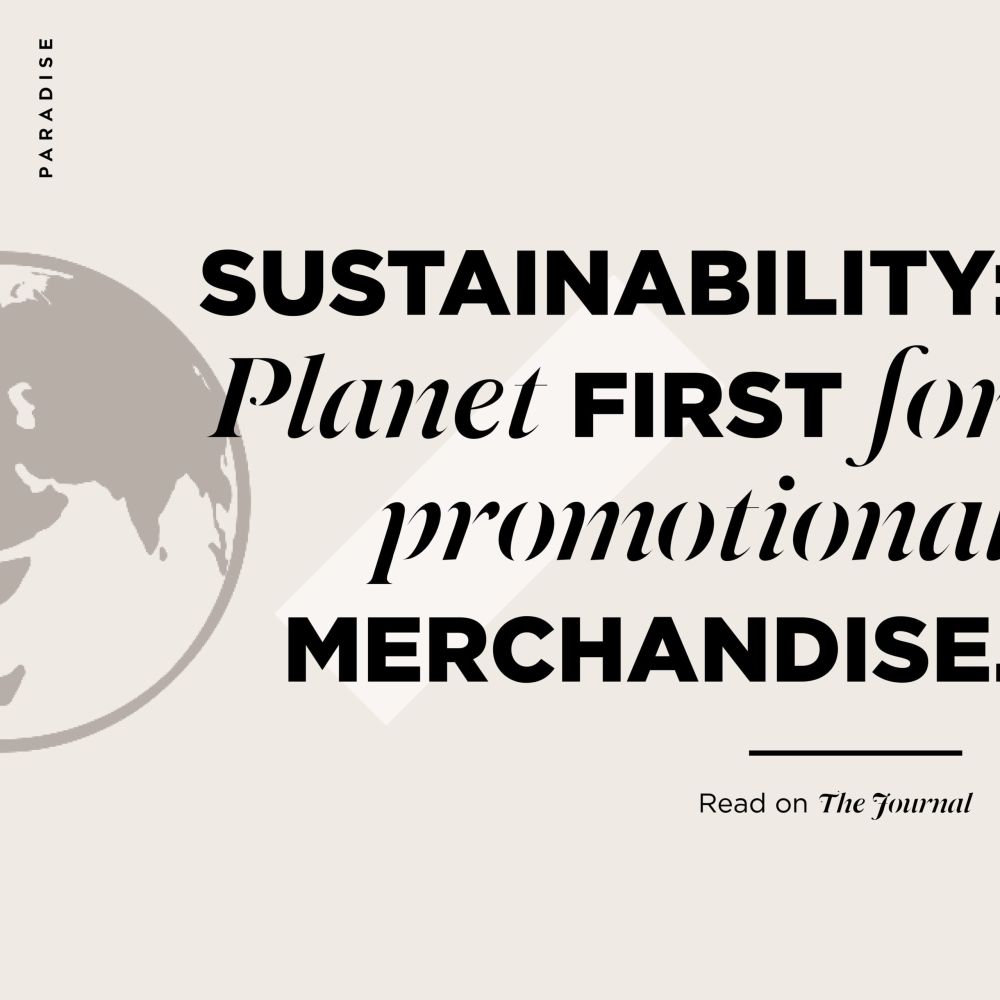Let’s talk fashion. We dissect it daily, take constant inspiration from style cues, absorb current trends (often subconsciously) and love to share our personal style with the world. Yet, amongst the sartorial joy, there’s one big problem and it all centres around the environmental impact of vast overproduction and fast fashion.
It’s a mass industry issue with excess production that’s out of control. So, in a material world, how do we reclaim and reinforce sustainable brand merchandise? Luckily, we have the promo solutions, and it all starts with awareness and the willingness to make mindful changes.
We know that affordability historically fuels the fast fashion beast, but the cost to the planet far outweighs the monetary savings. Thankfully, mindsets and habits are moving towards a brighter future and consumers are actively engaging with sustainability. Here’s a fun fact to back it up. Studies show 85% of people who have received a branded piece of promotional clothing, or an accessory, can remember the brand’s name.
This stat alone, proves that creating merchandise should be a part of your marketing budget (and it might even be worth increasing it). Consumers love merchandise. They can utilise it daily, which puts a high value on these items and of course, on the return for your business and the relationship with your consumers.
The facts on fast fashion
Firstly, let’s answer the question on why fast fashion is bad in the first place. Shockingly, fast fashion is the second largest polluter in the world, not far off the impact of the oil industry. Rough figures (from the Intergovernmental Panel on Climate Change) show that the fashion industry produces 10% of global carbon dioxide emissions, annually. There’s also a yearly usage estimate of 1.5 trillion litres of water, which stands for 20% of global wastewater, meaning sources could eventually dry up, with continued pollution in oceans, rivers and streams.
Additionally, figures show that 85% of all textiles are sent to waste yards, each year. To give you an image of how much that is, it’s more than enough to completely fill the Sydney Harbour, and it equates to one garbage truck of clothes being burned or dumped in landfill, every second.
The grim facts really are endless, with two tonnes of clothing purchased every minute in the UK, which is more than any other country in Europe. How about the rest of the world? Each year, 56 million tonnes of clothes are bought, with many researchers estimating this to rise to 93 million by 2030, if we don’t do anything about this problem right now.
Sustainability brings credibility
How to provide consumer merchandise the right way? Huge problems call for powerful solutions at Paradise, meaning we aim to offer the most sustainable, promotional merchandise alternatives available. We want to make a difference in a world of fast fashion and help brands who have the same outlook.
By working together with suppliers who produce clothing in the most sustainable way possible, our chosen suppliers make their products and packaging from natural materials, not plastic, and every item of clothing you receive is designed to be sent back once it’s worn out, so it can be recycled into new items from the materials that are recovered. Zero waste, everyone.
With all items designed to be returned and remade, this only happens because the material is so pure and makes the remanufacturing process possible. This immediately means that products are kinder, super-soft and not harmful to the environment.
Our factories also use renewable energy throughout the entire process, via solar farms and wind farms, including an on-site wind farm. Wondering about the water? Well, inside the factories where the fabric is dyed, the water is recovered, then cleaned and after that it’s recirculated again. On average, 95% of the water gets recirculated and recovered and is even drinkable again at the end of the process.
Organic cotton is used, which is positive for producers and the ecosystem it’s being produced in, whilst organic farming encourages biodiversity and gives the items that soft feel we’ve mentioned.
Amazingly, co-planting and traps for insects are used instead of pesticides and other fertilisers. In fact, I’ll let you in on a little-known secret – the special ingredient for this is cow poo. Organic cotton requires plenty of water, so it’s very important to choose where it’s grown. Our suppliers have chosen the perfect area, with monsoons filling the reservoirs with almost all the water that’s needed for the fields to happily grow the organic cotton.
Go sustainable with us
Increased material utilisation
Reduced chemical and water inputs and emissions
Apparel that can be sent back to us and recycled into new apparel or bags
We can supply you with ECO friendly apparel, made from organic and natural materials
Your brand will be represented as sustainable and innovative
On average, 85% of consumers will remember your brand in the best way possible
